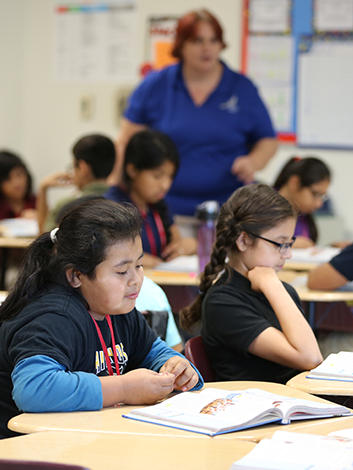Bullying, both in-person and online, has a major negative influence on student well-being and safety. It is critical for educators everywhere to understand its impacts, identify occurrences, and provide students with an environment that encourages healthy relationships.

Bullying is described as intentional aggressive behavior towards an individual or group. This behavior is typically repeated over time, and is intended to negatively impact the targeted individual socially, emotionally, or physically. It is linked to effects such as substance abuse, declining mental health, and decreased academic performance.





According to data from the National Center for Education Statistics, more than 27% of youth between the ages 12-18 report that they’ve been bullied.
9% of the students in the NCES study report being cyber-bullied.
Roughly 30% of students in 7th grade reported being bullied, while a smaller 22% of seniors in high school (12th grade) reported being bullied, according to the NCES study.
According to the NCES study, 31.4% of females 12-18 reported being bullied, while only 24.5% their male counterparts reported being the recipient of bullying.
Educators must be aware of where and when bullying might occur in order to properly address it. While bullying frequently occurs at school and on the playground, it might also occur in settings outside of school, on the bus, or online. Educators will be able to identify instances of bullying by watching for warning signs such as:
As is the case with all human relationships, bullying is complex and diverse. No silver bullet exists to eliminate it. At Leader in Me, we believe schools can most effectively address bullying through leadership development in both staff and students; thereby shifting paradigms and creating a healthy school culture.
Leader in Me Schools begin with staff, and then with students. They develop a staff that believes in their students, cares for their students’ well-being, and strives to uplift and inspire them each and every day. Educators lay the groundwork for a great school culture. As students interact with teachers who demonstrate respectful behavior, a ripple effect takes place within the school, and students begin to follow the example of their teachers and show more respect to their peers.
Leader in Me also deliberately focuses on developing student competencies such as teamwork, responsibility, collaboration, goal setting, and leadership. When these skills are integrated into the academic curriculum (not used as an isolated program), students embrace and implement these life skills. The skills become embedded in the culture of the school. Not only can this reduce bullying in schools, but it gives students a great foundation for future relationships.
Leader in Me Schools pursue providing their staff and students opportunities to lead certain aspects of the school. When the principal involves the staff and students in the direction, activities, and decisions of the school, both staff and students feel a greater commitment to improve the quality and performance of the school. Leader in Me proactively addresses school culture, and thereby reduces bullying.
Learn how thousands of schools in over 50 countries worldwide are discovering answers to some of the most challenging issues educators face today.